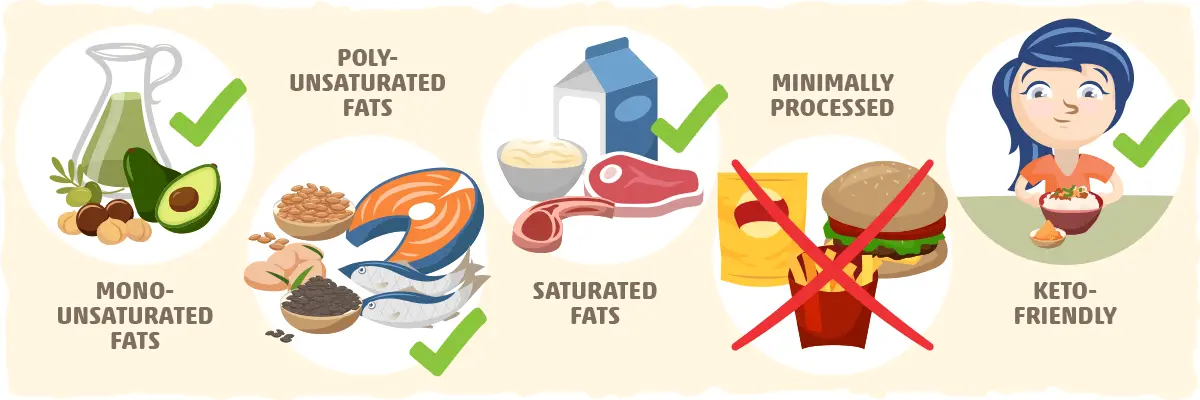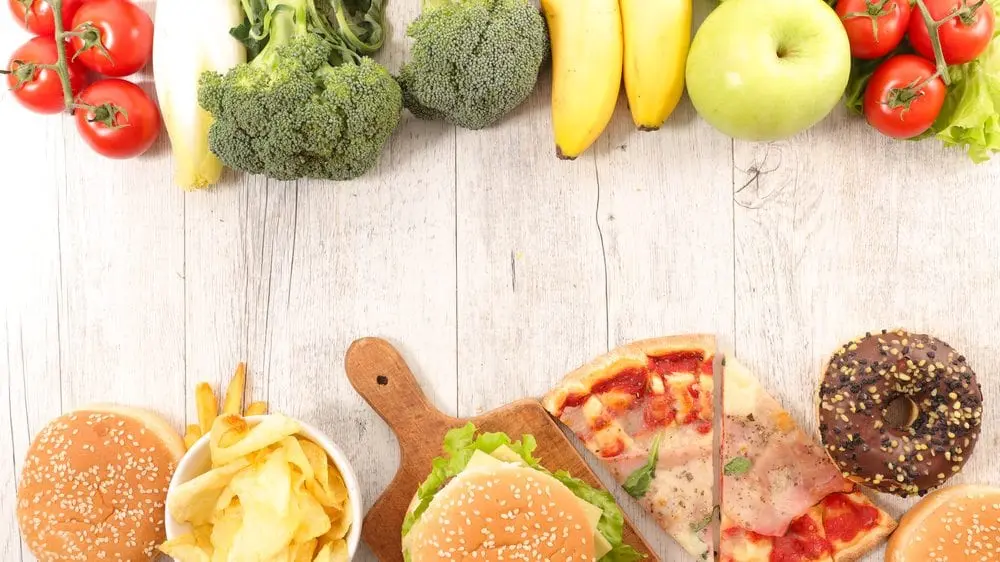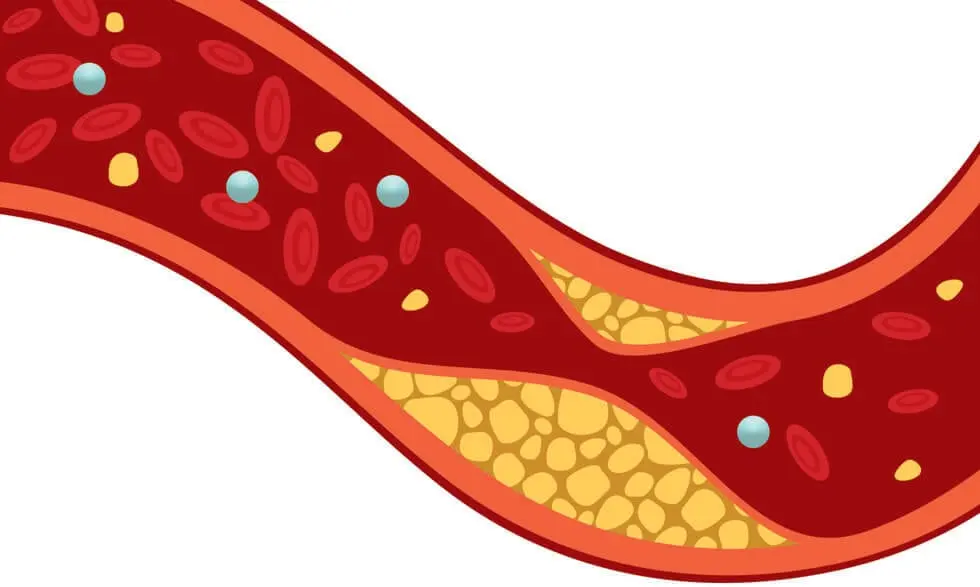Contents
- Myths and facts about fats
- Healthy fats are essential for health
- “Actors” in the family of fats
- All fatty foods contain several different kinds of fat.
- Understanding “bad” fats
- Fats and cholesterol
- The end of the line: How much fat is too much?
- Struck up a friendship with healthy fats and give up their bad forever
- For more information watch a video below:
For the past 30 years fat in the diet is considered a cause of excess weight, high cholesterol and heart disease. However, the use of low-fat products and following a low-fat diet is not enough for becoming slimmer and healthier. In fact, the reverse is true.
In addition to caring about how much fat do we eat, you need to do it thoughtfully. Indeed, reducing the consumption of some types of fats reduces the risk of many chronic diseases. On the other hand, certain types of fats are absolutely necessary for our health.
There is a lot of Information about the fats, and it may seem contradictory due to its incompleteness. So you have no gap in this field of knowledge, let’s deal with everything in right order and define friends and enemies between the fats.
Myths and facts about fats

Myth: a diet low in fat is the best way to defeat obesity.
Facts:
- The number of Americans who are obese has doubled over the last 20 years that coincided with the low-fat revolution.
- In 1960, the Americans received 45% of calories from fat – and only 13% were obese. Now, when most only get about 33% of calories from fat, 34% have a diagnosis of obesity!
Myth: to lose weight, you need to eat less fat
Facts:
- Ironically, the abrupt decrease of fat in the diet has the opposite effect: trying to eat less fat, we get bigger. Refusing from fats, many people begin to eat foods that are rich in easily digestible carbohydrates, or foods low in fat, then healthy fat are replaced with sugar and high-calorie refined carbohydrates. This, of course gives not the best effect on the figure.
- You need to reduce calories to lose weight. But fats saturate and satisfy your hunger, thereby protecting from overeating.
- The study showed that women on a diet with low fat lost more weight than women who followed their usual diet.
Healthy fats are essential for health
The human body uses fatty acids in every process, from building cell membranes to performing key functions in the brain, eyes and lungs. Fats perform the following functions in human body:
- Brain – fats compose 60% of brain tissue and are important for its functions, including learning abilities, memory and mood regulation. Fats are especially important for pregnant women as they participate in the development of the fetal brain.
- Cells – Fatty acids help cells stay movable and flexible, and are also responsible for the construction of cell membranes.
- Heart – 60 % of the energy our heart gets in the burning of fat. Some fats are also needed to maintain a stable heart rhythm.
- Nerves – fats compose the material that covers and protects the nerves, isolating electrical impulses and speeding their transmission.
- Lungs – pulmonary surfactant, which requires high concentration of saturated fats, enables them to function easily and keeps them from collapsing.
- Eyes – fats are essential for the realization of visual functions.
- Digestion – fats in a meal slow down the digestion process, the body has more time to absorb nutrients. Fats help provideing a constant level of energy and stay full longer. Fat-soluble vitamins (A, D, E, K) absorbed in the presence of fat.
- All the internal organs – fat is a cushion that protects our internal organs.
- Immune system – some fats help your metabolism and immune system stay healthy and to function properly.
“Actors” in the family of fats

To understand which fats are good and which are bad, you should know the names of the players and some information about them.
Monounsaturated fats
- Are liquid at room temperature and turbid when stored in the refrigerator.
- The main sources are vegetable oils such as rapeseed oil, peanut oil, and olive oil. Other good sources are avocados ; almonds, hazelnuts, pecans and pumpkin seeds and sesame seeds.
- People following traditional Mediterranean diets, which have a lot of products containing monounsaturated fats (olive oil), tend to have a lower risk of cardiovascular disease.
Polyunsaturated fats
- Are liquid at room temperature and also at low temperatures
- The main sources are sunflower, corn, soybean and Flaxseed oils, and also foods such as walnuts, flax seeds, and fish.
- This family includes the omega-3 fatty acids, which have anti-inflammatory effect. Our body is unable to produce them. In addition, omega-3 fats are found in very few foods.
Saturated fat
- As a rule, is in the solid state at room temperature and has high melting point
- The main sources are foods of animal origin, including meat and dairy products. Other sources are tropical vegetable oils such as coconut oil, palm oil and products made with their use. Poultry and fish contain saturated fats, but in smaller amounts than red meat.
- Saturated fat increases low-density lipoprotein, or bad cholesterol, which increases the risk of coronary heart disease (CHD).
- For our organism it is not necessary to obtain saturated fats from food, as all saturated fats it needs, it can produce independently when there is enough of “good fats” in the diet.
TRANS fats
- TRANS fats are created by heating liquid vegetable oils in the presence of hydrogen gas, a process called hydrogenation. Partial hydrogenation of vegetable oils makes them more stable and they deteriorate less, which is very good for food manufacturers – and very bad for you.
- The main sources of TRANS fats are vegetable oils, some Margarines, crackers, candies, cookies, snacks, fried foods, baked goods and other processed foods made with partially hydrogenated vegetable oils.
- TRANS-fats raise low-density lipoprotein, or bad cholesterol, which increases the risk of coronary heart disease and lowers “good” cholesterol (high lipoprotein density).
All fatty foods contain several different kinds of fat.
Any fat or oil are a mixture of different fats. The following table* shows this:
| Monounsaturated | Polyunsaturated | Rich | TRANS |
Olive oil | 72% | 8% | 13% | 0% |
Safflower oil | 12% | 74% | 9% | 0% |
Butter | 26% | 5% | 60% | 5% |
Margarine | 2% | 29% | 18% | 23% |
The group of omega-3-The healthiest fats

All of us should increase intake of beneficial omega-3 fatty acids, which is needed for such body functions as controlling blood clotting and creating cell membranes in the brain. We are still learning about the many benefits of omega-3, but research has shown that these fatty acids can have a positive impact in the following diseases:
- Cardiovascular disease. Epidemiological and clinical trials have shown that omega-3 fatty acids help lower triglyceride levels, growth rate of atherosclerotic plaques and risk of arrhythmias. They may also slightly lower blood pressure.
- Cancer of the liver . The use of omega – 3 fatty acids may be an effective therapy for the prevention and treatment of liver cancer.
- Depression. Omega-3 fatty acids reduces the symptoms of depression, possibly due to the fact that they contribute to the increase in the gray matter of the brain.
- Dementia. Eating fatty fish high in omega 3, lowers the likelihood of developing asymptomatic brain lesions that can lead to memory loss and dementia.
Types of omega-3 fatty acids
Three key members of the omega-3 family is alpha – linolenic acid (ALA); eicosapentaenoic acid (EPA) and docosahexaenoic acid (DHA). The best sources are fatty fish such as salmon, herring, mackerel , anchovies, sardines or fish fat as a Supplement. Canned tuna and lake trout can also be a good source, depending on how the fish were extracted and processed.
You may hear a lot about getting omega-3s from foods rich in fatty alpha-linolenic acids. ALK is the most common omega-3 acid present in the American diet and is available in abundance in flax seeds and Flaxseed oil, and walnuts. Although your body can convert ALA to EPA and DHA , you can’t be sure of this one hundred percent, because this possibility is only present for some people. Thus, in order to ensure getting enough of these vital nutrients, it is advisable to include in the diet the fatty fish or fish oil. But, if you don’t eat fish and fish oil, but use only the ALK, it is better than nothing, and protect your cardiovascular system will continue to grow, albeit not as in the use of fish oil.
Some people avoid seafood because they worry about mercury or other possible toxins in fish. Most experts agree that the benefits of two servings of fish of the cold seas in a week outweigh the risks.
Choosing the best omega-3 supplements
When selecting a nutritional Supplement omega-3 you need to keep in mind the following:
- Per day it is enough one capsule 500mg. The number more than this is unnecessary and may be detrimental to health. American Heart Association recommends the consumption of 1-3 grams per day of EPA and DHA. For some medical cases, higher doses of omega-3 may be useful, but before you apply them, consult with a doctor.
- Select supplements that do not contain mercury, pharmaceutical grade and molecular distilled. Make sure that the Supplement contains both DHA and EPA. It might be hard to find, but supplements with higher EPA is more preferable. The best ratio of EPA to DHA is 3:2
- Check the expiration date!
The ratio of omega-6 and omega-3
Omega-3 and omega-6 fatty acids are essential, meaning the body cannot produce them and we must obtain them from food. Proper balance of these two fats is extremely important for a number of reasons. Omega-6 trigger the inflammatory process, which helps us to avoid infection and promotes healing, while omega-3 are anti-inflammatory and turn off the inflammatory response when it is no longer needed.
In recent decades the ratio of omega-6 and omega-3 fatty acids have become unbalanced in the Western diet. Most people consume far too many omega-6 fatty acids and little omega-3. This factor is one of the important factors that can help to reduce the risk of heart disease, cancer, inflammatory diseases and depression.
Tips for a balanced intake of omega-fatty acids
Avoid vegetable oils such as corn or sunflower oil.
Reduce the intake of meat and dairy products.
Eliminate foods with a high degree processing.
Increase consumption of foods rich in omega-3 such as fish from cold seas (salmon), Flaxseed oil, and walnuts.
Understanding “bad” fats

Damaged fat: When good fats turn bad
Good fat can become bad if it gets damaged by heat, light or oxygen. Polyunsaturated fats are the most vulnerable. Oil with a high content of polyunsaturated fats (e.g. Flaxseed oil) must be stored in the refrigerator in a dark container. Cooking using these oils also damages the fats. Never use oil, seeds and nuts after they got nasty and got an unpleasant odor or taste.
The bad fats: TRANS fats (TRANS fatty acids)
TRANS-fats are fat molecules, distorted in the process of hydrogenation. In this process, liquid vegetable oil is heated and combines with the hydrogen. Our body does not need TRANS-fats, so any amount is not useful. If your diet lacks healthy fats, the body will use the deformation of TRANS-fats, which in turn increases the risk occurrence of heart disease and cancer.
So why do TRANS-fatty acids are so common in commercial products? Partially hydrogenated oil (obtained by hydrogenation) are more stable (less prone to damage), easy to transport, can withstand repeated heating, which makes them ideal for cooking French fries and hamburgers at our favorite fast food place.
TRANS fats can be found in such foods as :
- Baking – cookies, crackers, cakes, muffins, pies crusts, pizza dough, and some breads such as hamburger buns.
- Fried foods – doughnuts, French fries, fried chicken including chicken nuggets and solid crust Taco.
- Snacks – potato, corn, and chips, candy, popcorn.
- Solid fats – margarine and semi-solid vegetable oil.
- Pre-mixed foods – mix cake, pancake mix, chocolate mix drinks.
TRANS fats tend to raise LDL “bad” cholesterol and reduce “good”. This can lead to serious health problems, from heart disease to cancer. No amount of TRANS fat is useful and should not exceed 1% of the total number of calories.
Become a detective to search for TRANS fat
Use detective skills to avoid TRANS fats on your table:
When buying products, read the labels and follow the presence of “partially hydrogenated oils”. Even if the manufacturer of the product asserts that it has no TRANS fat, this ingredient tells you that the product is on the list of suspects for the presence of TRANS fats.
When eating out, turn in your “black” list of fried foods, biscuits and other confectionery products. Avoid these products if you are not sure that this cafe or restaurant care that their food does not contain TRANS fats.
Most countries do not have the rules on labelling for fast food. It may even be claimed that the products are cholesterol-free and cooked in vegetable oil. However, eating one doughnut at Breakfast (3.2 g of TFA) and a large portion of French fries at lunch (6.8 g of TFA), you add 10 grams of TFA in your diet, says the American Heart Association.
In some US cities (e.g. new York, Philadelphia, Seattle, Boston), as well as in the state of California TRANS fats are banned in restaurants. It made a large chain to stop using TRANS fats.
Fats and cholesterol

For many people, with the exception of diabetics, the relationship between the amount of cholesterol we consume, and the level of cholesterol in the blood is negligible. According to Higher school of health of Harvard, the greatest influence on the level of cholesterol in the blood has a compound fats in Your diet, not the amount of cholesterol You get from food.
Of course, you need to track the amount of cholesterol in your diet, but the consumption of healthy fats can provide more real help in controlling cholesterol levels. For example:
- Monounsaturated fats lower total and “bad” (low density lipoprotein) cholesterol in the blood while increasing “good” cholesterol (high-density lipoprotein).
- Polyunsaturated fats can lower triglycerides and fight inflammation.
- On the other hand, saturated fats can lead to higher blood cholesterol. TRANS fats are even worse as they not only raise LDL “bad” cholesterol and lowers good cholesterol.
If you suffer from cardiovascular disease and diabetes, or at risk of their occurrencedo not change your diet without consulting a doctor!
______________________________________________
The end of the line: How much fat is too much?
What amount of fat is extra depends on your lifestyle, weight, age, and especially from the state of your health. The Ministry of agriculture gives the following recommendations for the average adult:
- The total fat intake should be up to 20-35% of daily caloric intake
- Saturated fats not more than 10% of calories (200 calories for a diet of 2000 kcal)
- TRANS fats less than 1 % of calories (2 grams per day for 2000 kcal diet)
- Cholesterol no more than 300 mg per day
However, if you are concerned about cardiovascular disease, the American Heart Association suggests a similar plan, limiting saturated fats to 7% of daily calories (140 calories for a diet of 2000 calories).
How to follow these recommendations? The easiest way is to replace saturated and TRANS fats in your diet with mono – and polyunsaturated fats, and increase consumption of omega-3 fatty acids. Use the following guidelines to be sure that you consume only healthy fats.
Struck up a friendship with healthy fats and give up their bad forever
So, you’ve realized that you need to avoid saturated fat and TRANS fat… but how to get the healthy monounsaturated, polyunsaturated and omega-3 fats, which we talk about all the time?
- Make your own salad dressing. Commercial salad dressings often contain a lot of saturated fats, harmful chemicals and made using overly processed, damaged oils. Make your own dressings with high-quality olive oil cold pressed, linseed or sesame oil and Your favorite herbs.
- Which is better: butter or margarine? Both have good and bad sides. As for margarine, choose soft and make sure there are no TRANS-fats and hydrogenated vegetable oils. Regardless of whether you choose butter or margarine, use them in moderation and avoid mixing with other products.Olive oil – a more beneficial replacement.
- Meat question. Beef, pork, lamb and dairy products are high in saturated fat. Reduce consumption of these products. Whenever possible, choose milk and cheese with low fat content. Try to go for lean meat, often choose white meat instead of red, because it contains less saturated fat.
- Do not try to drop the body fat, go on a good fats. If you’re worried about your weight or heart health and blood vessels, do not avoid fats in your diet, try replacing all the bad fats with good. This may mean that it is only necessary to replace some types of meat that you eat, beans and legumes, use vegetable oils instead of tropical (palm, coconut), which typically contain more saturated fats.
- Ask what oil your food is cooked with. When you dine in a cafe or restaurant, ask the waiter what oil did they use. If it’s partially hydrogenated oil, get out of there soon! Either ask for the food you ordered was cooked with olive oil which is always available in most restaurants.










